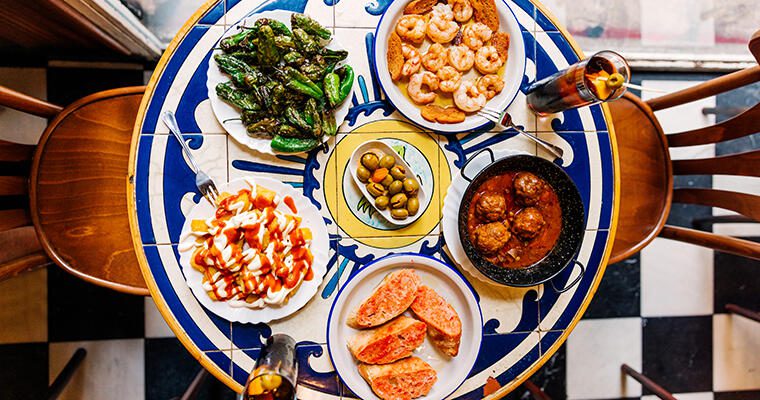Try it, you might like it. Sometimes all it takes is one taste to open doors to a world of global flavor. Mezze, the sharing plates of Mediterranean cuisine, are a great way to introduce ingredients to consumers.
Mezze means “appetizer” in Greek or Middle Eastern food culture. At its heart are small plates that offer a chance to showcase flavors, textures and tastes. They can be savored by one person or shared among guests at the table.
“Mediterranean mezze is an opportunity to share this wonderful melting pot of cuisines and sample things that might not be familiar but are delicious and healthy,” said Gordon Food Service Consulting Chef Nicholas Gonring.
Mezze fits retail and catering
While sharing plates are not common in senior living or long-term care settings, Gordon Food Service Healthcare Industry Sales Strategist Amanda Goldman notes that they lend themselves to hospital retail and catering functions.
“When talking about healthcare dining, patient feeding may be the most important part, but it’s only half of the picture,” she said. “There’s hospital cafes, doctor’s dining rooms, conferences and other places where shared plates stand out.”
Mezze in a healthcare retail setting encourages people to try new flavors and, at the same time, eat healthier.
“With mezze, you’re talking about smaller portions, so it encourages customers to slow down and enjoy the flavors while not being tempted to overeat,” she said. “And studies have shown that Mediterranean diets are heart healthy.”
Give guests a taste of mezze
For senior living and long-term care diners, mezze has a place at the table. Appetizers are a great way for your dining room to test ingredients.
There are several Gordon Food Service Kitchen-Tested Recipes available:
- Pinzimonio Salad. The Italian-inspired, shaved crudite salad features roasted beets, feta and yogurt.
- Mediterranean Chicken Skewers. Skewered chicken-thigh brochettes are prepared souvlaki-style and served with peppers and onions on naan bread.
- Butternut Squash and Pomegranate Dip. This dip is a play on hummus, but without chickpeas. Served with naan flatbread, it’s an irresistible snack.
- Harissa Honey-Glazed Chicken. Glazed chicken drumsticks served with a mound of couscous and a dollop of garlicky toum sauce will rival the ever-popular chicken wings.
- Grilled Cauli Steak. Charred cauliflower is flavored further with caramelized pomegranate molasses, chermoula paste and muhammara, a cousin of the familiar romesco sauce.
Many Mediterranean foods use recognizable vegetables, meats, fish and pasta. It’s often the seasonings, rubs, sauces and cooking style that are less familiar. Serving an appetizer allows diners to sample and give feedback that can be used for menu planning.
“When you’re sharing, you’re not investing a lot of money into one entree,” Gonring noted. “Instead, you’re encouraging three or four people to taste in small quantities and talk about it.”




























